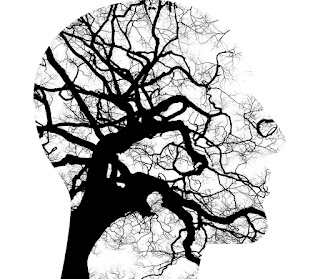
MENTAL HEALTH DEMON OR DISORDER

MENTAL HEALTH: DEMON OR DISORDER
“One need not be a chamber to be haunted; one need not be a house; the brain has corridors surpassing material place.” – Emily Dickinson
The father of modern philosophy-René Descartes proposed the theory of duality, viz. mind and body are distinct and separable. The mental phenomenon, in the world of Cartesian Dualism, is non-physical.
Whether all of this is true or not, it is a province of philosophy and its veracity is dependent on which school of thought can craft a better argument on a given day. What we can experience for sure, is the reality of mental health problems and their various interrelated issues.
Mind is not separated from the body; its problems are intrinsically related to the physical body and vice-versa. All this is beginning to be taken seriously only fairly recently.
People have been battling with depression and anxiety ever since the enigma of the human brain produced the magic called consciousness. This persistent mental evil has been called many things, from the Greek Goddess Oyzis to Dysthymia (PDD).
We have known the existence of this demon for a long time ago; it is only now that we’ve begun to unveil its terrifying face. Mental illnesses come in all shapes and forms, their symptoms are dissimilar, their outcomes different and sometimes even contrasting.
\What we are seeing now is a collective upsurge of awareness and consciousness-raising about the phenomenon. Paintings like Uccello’s ‘The Battle of San Romano’, 1438 to Altdorfer’s ‘The Battle of Alexander at Issus, 1529; artists have mostly illuminated the glorious usurping and the revolutions. Art, in this case, has both imitated and informed life.
The evolution of society is always coupled with the evolution of art, one not being exclusive to the other. Whether it’s Kollwitz’s ‘War’ (Krieg), 1923 that brilliantly illustrates the harrowing sorrow of war; Picasso’s ‘Guernica’, 1937, which is the epitome of chaos and struggle; or Tom Lea’s iconic painting ‘The 2,000 Yard Stare’ 1945 which internalizes the horror of wars.
Slowly and steadily we began to assess the psychological misfortunes of our species. The assessment, relatively primitive, has been done to the point that the overwhelming knowledge of it is darker and more subversive than the innocent but regressive ignorance of the whole phenomenon. Today, children are growing up with a vocabulary consisting of up-to-date scientific literature regarding mental health, or anything for that matter.
What has befallen us is the cascading flow of information with the click of a finger which has often fueled the turmoil within rather than assuages it. An aware mind is leashed with misery. This overflow of information is deeply linked to the growing number of mental health cases around the world.
The internet has, simultaneously, provided both the outlet for ranting out one’s mind and the consciousness of the all perceptible miseries of the world.
We are drowning in information and the value of a commodity is in its ability to hold our attention. No wonder, ADHD is at an all-time high. Lack of Knowledge is a problem but, the inability to fight it is exponentially better than battling an incomprehensible enemy.
Plato’s ‘allegory of the cave’ is still relevant today and knowledge is still the single-best weapon in our arsenal. We don’t know a lot but one thing is clear: Ignorance is not bliss.
And we never know when we are entangled in the world of artificial intelligence and are dependent on what is portrayed, rather than discovering the unfathomable conflict going on inside us.
So, it’s high time to realize the gravity of the seriousness of what the greater demon is planning to destroy the reasonable nexus between the organic mental faculty and inner instinct to respond to it realistically.







